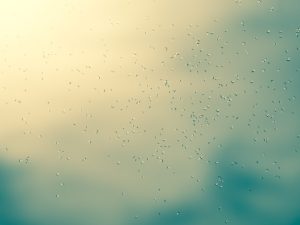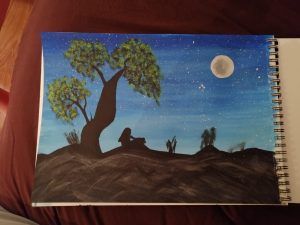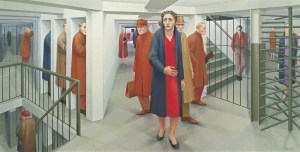I’m an emerging writer who gravitates towards the historical, the weird, and the fantastic. Writing fantastic literature enables me to express ideas that cannot be expressed through straightforward realism. This does not mean, however, that fantasy and realism do not coexist in my work. In the best fantasies, a synthesis between these two modes takes place.
I find the best fantasy stories are profoundly mimetic in the sense that they mimic life, even if they break the rules of realism to describe dragon societies or impossible realms. The best fantasies reflect some aspect of ourselves back at us.
For example, my upcoming urban fantasy story, “The Goddess in Him” (NewMyths.com, Sept. 2020), is about a Scythian temporal refugee who lives in the Plateau neighbourhood of Montreal and is having difficulty adjusting to twenty-first century life.
Montreal is a city with layers of history. The Kanyen’kehà:ka, the French and English settlers, and other waves of immigrants have each left their traces on her urban fabric. I’m hoping “The Goddess in Him” will be the first of several set in Montreal.
My favourite authors are Guy Gavriel Kay, Jeff VanderMeer, Michael Ondaatje, and Charles de Lint. My in-progress novel is an archaeological thriller with a Jorge Luis Borges-inspired twist, while my short fiction has appeared before in Bards and Sages Quarterly and the 600 Second Saga podcast. I recently taught a creative writing class in speculative fiction at the Thomas More Institute.
Ever since graduating from McGill University with my MA in English literature, I’ve been producing literature rather than theorizing about it. Fantasy can be just as much a refusal of the terms dictated by the modern world and a search for new ideas as any experimental modernist form.
Who or what inspires you?
Ray Bradbury’s Zen in the Art of Writing once inspired me with the insane thought that it was humanly possible for me to match his prolific output—one 6,000-word, incredibly imaginative story per week. I’d love to be that prolific, but I guess I’m just not that type of writer. At least I’m writing published fiction now. My Odyssey classmates and writing group also inspire and encourage me and I couldn’t have gotten to this point without them.
This is a loaded question, but where do your ideas come from?
For “The Pilgrim’s Yoke,” I wanted to tell a story about the hero’s journey that began with the return home. I drew upon my personal experience of pilgrimage to flesh out the emotions. In coming up with story ideas, sometimes a pun or an amusing elevator pitch combining two book or movie concepts will give me a crazy idea for a story. Basically, I daydream a lot, and I take in ideas from everything I read.
What’s your editorial process like?
When I come up with a story idea, I usually outline the plot before I write. However, for “The Goddess in Him,” I built a character first. I did this through a series of exercises during a fiction writing workshop at TMI. This resulted in a more organic story where my protagonist drove events. I usually rewrite my rough draft once or twice. Then I send it to my writing group for feedback and edit it until it’s done.
Are you more of a gardener or an architect? In other words, do you prefer to outline or see how the story unfolds?
I’d say I’m an architect, though I’m still figuring out how I work best. However, the story writing process is inescapably organic. I don’t believe it’s an either/or proposition between architect and gardener. I like Jeff VanderMeer’s idea of organic architecture. Stories have fractal, organic structures like sponges, mushrooms, or starfish. Though I make blueprints, the organism often fails to conform, in which case I must decide whether to keep the mutant limb or let it grow out.
Who is your dream collaborator? (Any creative—artist, poet, writer, etc.)
My dream collaborator would be an artist. I love the literary adventure fantasy magazine Beneath Ceaseless Skies’s cover illustrations, especially their sense of sublime scale. It would be a thrill to collaborate with an artist, possibly a concept artist with an adventure fantasy/historical/archaeological sensibility, who can paint an imaginary world to illustrate one of my short stories. It would also be cool to write a story inspired by an artist’s painting of a similarly themed larger-than-life setting.
Matthew Rettino is a speculative fiction writer who lives in the West Island of Montreal. His first story, “The Pilgrim’s Yoke,” appeared in Bards and Sages Quarterly in 2018, while his forthcoming story, “The Goddess In Him,” will appear in September 2020 with NewMyths.com. He works as a freelance editor and leads courses at the Thomas More Institute. His Master’s thesis on modern fantasy, “Fantasy as a Peripheral Modernism: Uneven Development in Charles de Lint’s Urban Fantasy” is free to read online. He is presently working on an archaeological thriller with a weird fiction twist inspired by Jorge Luis Borges. For more on Matthew, follow him on Twitter, and be sure to check out his blog, portfolio, and monthly newsletter.





[…] am a professional writer and freelance editor living in Montreal’s West Island. Graphite Publications listed me as a creative-to-watch in 2019. Welcome to my […]